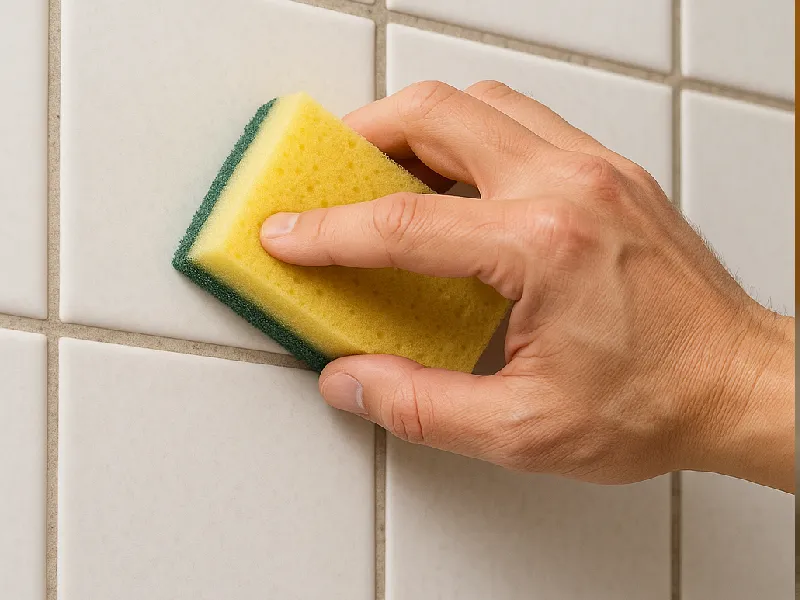Welcome to our comprehensive guide on how to clean and maintain your garden! Whether you’re an experienced gardener or just starting out, this guide is packed with valuable gardening tips and expert advice to help you keep your garden in top shape.
From garden care basics to advanced techniques, we’ve got you covered.
Having a beautiful and healthy garden requires regular maintenance and care. With the right practices and knowledge, you can ensure that your yard remains vibrant and flourishing throughout the year.
In this guide, we’ll provide you with essential garden maintenance tips and techniques to help you achieve the garden of your dreams.

From cleaning and organizing your outdoor space to lawn care and seasonal maintenance, we’ll cover it all. You’ll learn how to effectively clean and maintain your garden, manage pests, water your plants efficiently, and create a thriving lawn.
Plus, we’ll share valuable insights on how to adapt your maintenance routine to each season, ensuring that your garden remains in optimal condition year-round.
Whether you have a small yard or a sprawling garden, these gardening tips and techniques will provide you with the knowledge and skills to make your garden the envy of the neighborhood. So, let’s dive in and discover the secrets to keeping your garden clean, well-maintained, and flourishing!
Essential Tools and Equipment for Garden Maintenance
To effectively clean and maintain your garden, it’s important to have the right tools and equipment. In this section, we will discuss the essential items you’ll need for outdoor cleaning and garden organization. From rakes and shovels to storage solutions, we’ll help you get organized and prepared for your garden maintenance tasks.
Outdoor Cleaning Tools
Keeping your garden clean and free from debris is crucial for maintaining its overall health and appearance. Here are some essential outdoor cleaning tools you should have:
- Rakes: A sturdy rake is essential for removing leaves, twigs, and other debris from your lawn and garden beds.
- Brooms: Invest in a quality broom for sweeping patios, pathways, and other hard surfaces in your garden.
- Pruning Shears: These sharp tools are essential for trimming back overgrown branches and shrubs.
- Leaf Blower: If you have a large garden with a lot of trees, a leaf blower can save you time and effort in removing fallen leaves.
Garden Organization Solutions
Keeping your gardening tools and equipment well-organized not only makes them easier to find but also extends their lifespan. Here are some garden organization solutions to consider:
- Garden Shed: If you have enough space, investing in a garden shed can provide a dedicated storage area for your tools and equipment.
- Tool Rack: Hang a tool rack on the wall of your shed or garage to keep your frequently used tools easily accessible.
- Storage Bins: Use plastic storage bins with lids to store smaller gardening items like gloves, seeds, and fertilizers.
- Potting Bench: A potting bench can serve as a designated workspace for transplanting and repotting plants.

“Having the right tools for garden maintenance ensures that you can clean and organize your outdoor space efficiently, leading to a more enjoyable gardening experience.”
By investing in the essential tools and equipment for garden maintenance, you’ll be well-equipped to clean and organize your outdoor space effectively. Whether it’s clearing away debris or tidying up your gardening area, having the right tools can make all the difference in keeping your garden thriving and visually appealing.
Lawn Care Techniques for a Healthy Yard
A lush and healthy lawn is the centerpiece of any beautiful garden. To keep your grass green and vibrant, it’s essential to implement proper lawn care techniques. In this section, we’ll provide you with expert advice on maintaining a healthy yard.
Mowing
Regular mowing is key to a well-maintained lawn. Set your lawnmower blade to the appropriate height, depending on the grass type. Avoid cutting the grass too short as this can stress the roots and leave your lawn vulnerable to weeds and diseases.
Watering
Proper watering is vital for the health of your lawn. Deep, infrequent watering encourages deep root growth. Aim to provide about an inch of water per week, either through rainfall or irrigation. Water your lawn early in the morning to minimize evaporation and fungal growth.
Fertilizing
Fertilizing your lawn helps provide essential nutrients that support growth. Choose a high-quality, slow-release fertilizer with the correct balance of nitrogen, phosphorus, and potassium. Follow the recommended application rates and timings for best results.
Aerating
Aerating your lawn helps improve soil compaction and allows better water and nutrient absorption. Use a core aerator or a manual lawn aerator to remove small plugs of soil from the lawn. This process should be done annually or as needed, especially if your lawn sees heavy foot traffic.
Weeding
Regularly removing weeds from your lawn is crucial for maintaining its health and appearance. Use a weed control product specific to your grass type and follow the instructions carefully. Additionally, hand-pull weeds when possible to minimize the use of chemicals.
Table: Lawn Care Schedule
| Task | Frequency |
|---|---|
| Mowing | Once a week |
| Watering | Deeply once or twice a week |
| Fertilizing | Every 6-8 weeks |
| Aerating | Once a year |
| Weeding | As needed |
By following these lawn care techniques, you can ensure your yard remains healthy and vibrant throughout the year. Implementing a regular maintenance schedule will help you achieve the beautiful, lush lawn you desire.
Seasonal Garden Maintenance Tips
Different seasons bring different challenges for garden maintenance. It’s important to adjust your garden care routine to meet the specific needs of each season. In this section, we will provide you with seasonal gardening tips to help keep your garden looking its best all year round.
Spring
In the spring, your garden starts to come alive after the winter months. Here are some essential tasks to focus on during this season:
- Pruning: Trim back any dead branches or overgrown plants to promote healthy growth.
- Weeding: Remove any weeds that have sprouted to prevent them from taking over your garden.
- Planting: Take advantage of the warmer weather by planting annual flowers and vegetables.

Summer
Summer is a time of growth and abundance in the garden. Here are some important tasks to keep in mind:
- Watering: Increase your watering frequency to ensure that plants stay hydrated in the hot summer months.
- Mulching: Apply a layer of mulch around your plants to help retain moisture and suppress weed growth.
- Deadheading: Remove spent flowers to encourage continuous blooming throughout the season.
Fall
Fall is a time for preparation and clean-up in the garden. Here are some key tasks to tackle:
- Leaf removal: Rake up fallen leaves to prevent them from smothering your lawn and plants.
- Dividing perennials: Take the opportunity to divide and transplant overcrowded perennials.
- Bulb planting: Plant spring-flowering bulbs such as tulips and daffodils for a burst of color next year.
Winter
Winter is a time for garden maintenance and preparation for the upcoming growing season. Here’s what you can do:
- Clean and store tools: Clean and sharpen your gardening tools, then store them properly for the winter.
- Protect plants: Cover delicate plants with burlap or mulch to shield them from harsh winter conditions.
- Plan for spring: Use the winter months to plan and prepare for new gardening projects in the upcoming spring.
By following these seasonal garden maintenance tips, you’ll be able to adapt your garden care routine to the changing seasons and keep your garden thriving all year long.
Conclusion
Congratulations on gaining valuable knowledge and tips from this comprehensive guide! With the information provided, you are now well-prepared to effectively clean and maintain your garden. Remember that consistency is key, so make sure to establish a regular maintenance routine.
Adapt your maintenance tasks according to the specific needs of your plants and yard. This will ensure that your garden remains healthy and vibrant throughout the year.
By incorporating the practices learned in this guide into your gardening habits, you can enjoy a beautiful and thriving garden for years to come. Maintain a clean and well-maintained garden, and watch as it becomes a source of pride and joy for you and your family!








